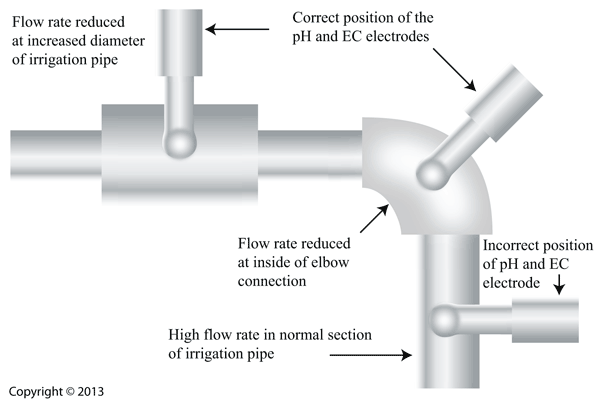How to monitor and control pH in closed hydroponic systems
Many growers are under the impression that a maintaining a specific pH is essential to optimal growth and good yields. This is a misconception about the effect of pH on plant growth. The specific pH of the nutrient solution does not have a significant effect on plant growth or for that matter the roots or their development. In fact plants can grow at a pH of 4.0 or even 8.5 without any root damage. The limiting factor is the nutrient availability that becomes the restricting factor outside the recommended pH ranges of 5.8 and 6.8. The overall availability of all nutrients are optimized at a slightly acidic solution. The critical nutrients are Mn, Cu, Zn and especially Fe. It is important to note that reduced availability does not imply that deficiency symptoms will appear.
Since hydroponic systems, be it closed systems or open systems, use inert media, the root environment as well as the water has no buffering capacity. This implies that a change in pH of the water will have a relative quick influence on plant growth. If the same water was applied to soil the change in pH of the water will not affect the soil pH since the soil is very well buffered. Changes in soil pH tend to be seed over long periods. It is thus important to install an automatic pH controller that can maintain a pH between 5.8 and 6.8. These systems require three components: an electrode, a controller and a solenoid valve.
Electrodes: Electrodes do not last very long. Expect to replace electrodes every 2-3 years. It is important to analyze the water in order to determine how corrosive the water is. If the water is extremely corrosive one should use electrodes that will withstand those harsh conditions. In order to increase electrode life, the electrode should be positioned where the flow rate of the water is at its slowest. Rapid response time is not important. The probes should also not be placed closer than 1m from the point where the nutrients and acid/base are injected into the irrigation system. Placing the probes closer than 1m reduces the accuracy of the probes since the nutrients and acids/base have not mixed properly.
Controller: The controller sets the intervals when the pH or EC are measured and the amount of solution is allowed to enter the system. The controller settings are extremely important. Setting the controller to measure the solution to often will result in to high concentrations of the solutions to be inserted into the system. Setting the controller to check the solution for long intervals will result in the set pH and EC never to be reached, since the change in pH and EC will be faster than what the controller is managing. The controller’s main purpose is to send a signal (usually 12V DC) to the solenoid to open or close.
Solenoid: The solenoid should be made from either plastic or some material that can withstand the highly corrosive characteristics of nutrient solutions. Solenoids are valves that can only be opened by a controller using between 12V and 24V DC current.

Ideal position of the pH and EC probe in the irrigation line. The probes should be placed where the solution moves slowest and should not be closer than 1m from where the nutrients are inserted into the irrigation system.


